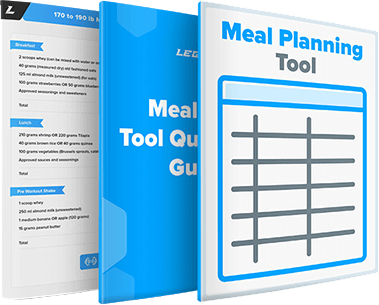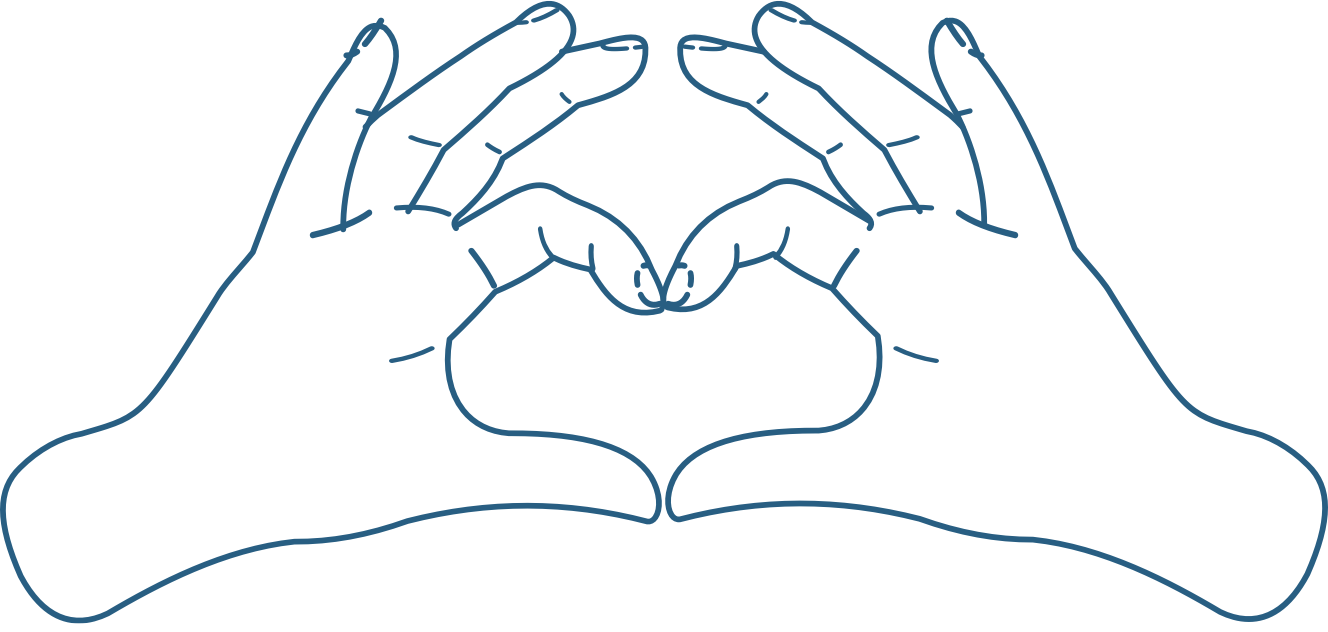Key Takeaways
- Your shoulders are comprised of three major muscles known as the anterior (front) deltoid, the lateral (side) deltoid, and the posterior (back) deltoid.
- The best shoulder exercises are pushing movements that allow you to safely move heavy loads and progress to heavier ones.
- The best way to build your shoulders is to get as strong as possible on a handful of key exercises, including the barbell and dumbbell overhead press, the dumbbell side raise, and the Arnold press.
The shoulders are the calves of the upper body.
They’re small, stubborn muscles that, when underdeveloped, screw up the “aesthetics” of everything you’ve got going on above the waist.
I can attest to this firsthand.
Check out this picture of me taken several years ago, before I knew what I was doing in the kitchen and gym:
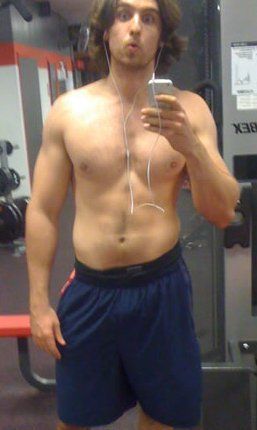
This was taken after about seven years of consistent weightlifting, so as you can imagine, I wasn’t too thrilled.
My chest and arms had some meat on them (and blubber), but my shoulders were woefully undersized in comparison.
Soon after that picture was taken, however, I drastically changed how I ate and trained, and how I trained my shoulders in particular.
Here’s what happened over the next few years:

Half-natty lighting, I know, but as you can clearly see, my shoulders were no longer a glaring weakness in my physique.
And here’s a recent shot of me at a higher, more sustainable body fat percentage:
View this post on Instagram
It’s taken years of consistent training to get where I’m at today, but it would’ve taken a lot longer (or never happened at all) had I not made major changes to my old shoulder workouts.
And fortunately, I’ve learned that building a great pair of shoulders isn’t complicated.
You just have to consistently do a few things right and avoid a few pitfalls, and that’s exactly what you’re going to learn about in this article.
By the end, you’ll know . . .
- What shoulder muscles you want to train most
- The three biggest mistakes people make in their shoulder workouts
- The three most important principles of effective shoulder training
- The absolute best shoulder exercises you can do
- My favorite barbell and dumbbell shoulder workouts
- And more . . .
Let’s start with a brief overview of shoulder anatomy.
- The Anatomy of the Shoulder Muscles
- The 3 Biggest Shoulder Workout Mistakes
- The Three Rules for Building Great Shoulders
- The 7 Best Shoulder Exercises
- The Best Shoulder Workout for Men & Women
- What About Supplements?
- The Bottom Line on the Best Shoulder Workout
Table of Contents
+The Anatomy of the Shoulder Muscles
The shoulders are comprised of several muscles.
The three most prominent are the “deltoids,” and here’s how they look:

There are smaller muscles as well that enable the ball-shaped head of the arm bone to spin and roll in the socket of the shoulder blade.
These are known as the rotator cuff muscles, and here’s how they look:
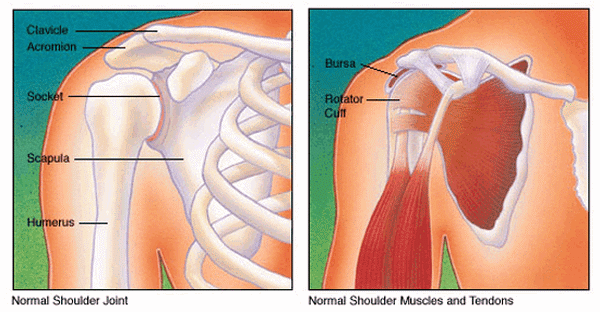
When people talk about developing their shoulders, they’re talking about increasing the size of their deltoids.
These are the big, visible muscles, and are what we’ll be focusing on in this article.
(Exercises done specifically for the rotator cuffs are supportive but don’t contribute to the overall size and look of the shoulders. If you want to learn more about training these muscles, check out this article.)
When it comes to training your shoulders, it’s very important that you work specifically to develop each of the three deltoids.
Many people fail to do this by focusing exclusively on the anterior (front) deltoid through endless bench pressing and shoulder pressing.
This can work for some people with great genetics, but for most, it results in underwhelming shoulders that lack the round, “capped” look produced by well-developed lateral (side) and posterior (rear) deltoids.
(This was my problem in the first picture I shared above—lots of anterior and little lateral and posterior delt development).
Here are a few other good examples of shoulder transformations from guys who followed my Bigger Leaner Stronger program:

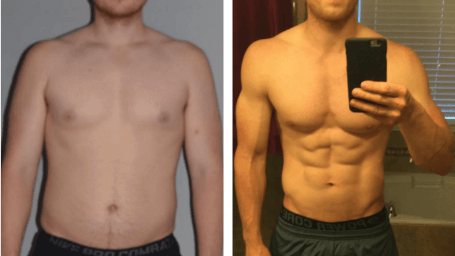
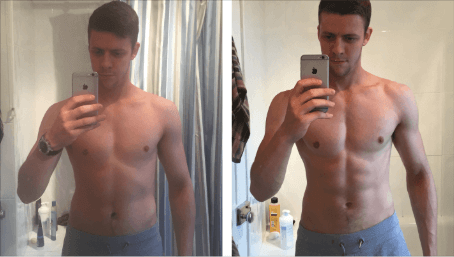
And while most women don’t have the same fixation on shoulder development as most guys, they generally do want above-average shoulder definition.
That’s why I include a handful of sets of direct shoulder work in my programs for women, including Thinner Leaner Stronger.
Most of the shoulder exercises I recommend also target the lats and biceps, which are on most everyone’s wish list. Most chest exercises, like the barbell and dumbbell bench press and incline bench press train the shoulders as well.
And if you’re a woman who’s worried that developing your shoulders is going to make you look “blocky,” or “manly,” check out these women who followed Thinner Leaner Stronger:
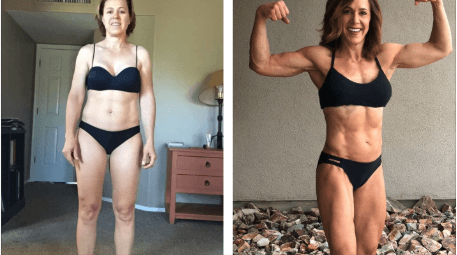
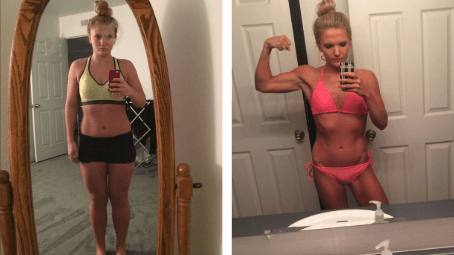
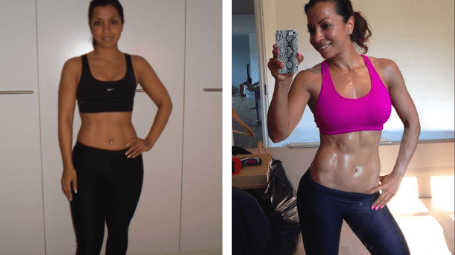
Each of them trained their shoulders directly multiple times per week and, well, the proof is in the results. 🙂
Some people also consider the trapezius muscle, or “traps,” to be part of the shoulders, but that’s not entirely accurate.
The traps stretch from the middle of the upper back to the top of your collarbone, stopping right where the lateral delts begin.
Here’s what they look like:
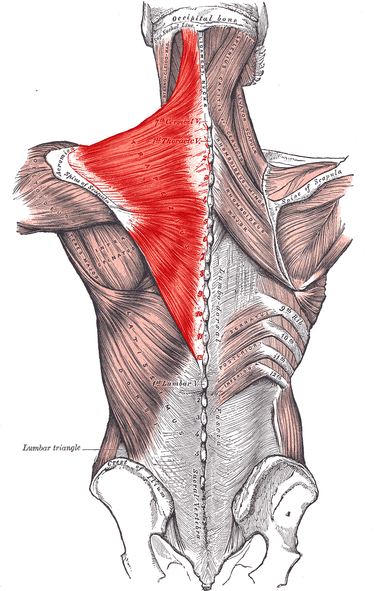
Due to their proximity to the deltoids, the traps are involved in some shoulder exercises, but the muscle group doesn’t directly contribute to the size and look of your shoulders.
Instead, the traps are the backdrop between your shoulders and neck and a major player in the development of your back, along with two other large back muscles, the rhomboids and the lats.
So, what’s the best way to build full, round, proportionate shoulders?
Let’s find out.
The 3 Biggest Shoulder Workout Mistakes
To understand how to most effectively train your shoulders, let’s discuss three ways to royally screw it up:
- Doing the wrong shoulder exercises
- Neglecting progressive overload
- Doing a lot of high-rep training
Let’s review each in more detail and then learn how to train our shoulders correctly.
1. Doing the wrong shoulder exercises.
I used to be just as guilty of this as anyone.
I mostly did machine exercises and isolation movements, which aren’t useless, but can’t alone get you to your goal.
Don’t worry, though. You’re going to learn all of the best shoulder exercises in just a moment.
2. Neglecting progressive overload.
Want “one weird trick” for gaining muscle and strength quickly?
Here you go:
Prioritize progressive overload in your training over all else.
Yes, over your exercise selection, training frequency, or programming techniques, including “fancy” ones like supersets, rest-pause training, and blood flow restriction training.
Progressive overload is the master key to more muscle and if you don’t get it right, you’re always going to struggle to develop your shoulders (and every other muscle group, for that matter).
Progressive overload refers to increasing the amount of tension your muscles produce over time, and the most effective way to do this is by progressively increasing the amount of weight that you’re lifting.
In other words, the key to gaining muscle and strength isn’t doing a laundry list of different exercises, balancing on a BOSU ball, or seeing how much you can sweat on everything in the gym.
It’s making your muscles work harder over time.
And this is exactly what you do when you gradually force them to handle heavier and heavier weights.
3. Doing a lot of high-rep training.
This was a rather “shocking” lesson to learn because I’d always believed heavy weightlifting was for gaining strength, not size.
I was wrong. Very wrong.
In fact, as natural weightlifters, increasing our whole-body strength is one of the most effective ways to gain muscle.
So much so that it should be one of our primary goals in our training, and to accomplish that, we need to do a lot of heavy weightlifting.
What this means is to maximize the development of any major muscle group in your body, you need to focus on compound exercises and heavy weights.
And for the shoulders, that means a lot of heavy barbell and dumbbell pressing with some supplementary work for the side and rear delts.
“But wait a minute,” you might be thinking. “[SHREDDED FITNESS MODEL] does a billion reps of isolation exercises in his shoulder workouts and has 3D cannonball shoulders . . . What gives?”
If only you had his #dedication. All 2 grams of it that he injects every week.
That probably sounds cynical, but it’s true. Steroid use is rampant in this space and it changes everything.
With the right drugs, someone can basically sit in the gym for a few hours every day doing set after set, exercise after exercise, and his (or her) muscles will just get bigger and bigger.
(A bit of reductive, I know, but more right than wrong.)
A good example of the muscle-building power of steroids comes from a study conducted by scientists at the Charles R. Drew University of Medicine and Science.
The scientists split 43 resistance-trained men ranging from 19 to 40 years of age into four groups:
- Group one consumed a placebo and didn’t lift weights.
- Group two was injected with 600 mg of testosterone and didn’t lift weights.
- Group three consumed a placebo and lifted weights.
- Group four was injected with 600 mg of testosterone and lifted weights.
Everyone followed this protocol for 10 weeks, and before and after the study, the researchers measured the participants’ weight, strength, and body composition.
And the results illustrate why steroids are so popular.
As expected, the guys who didn’t lift weights or take steroids didn’t gain any muscle to speak of and added a measly 7 pounds to their squat and nothing to their bench press.
The natty lifters in group three fared significantly better and gained about 4.5 pounds of muscle and added about 77 pounds to their squat and bench press, which is fantastic for 10 weeks of training.
They could’ve skipped all the workouts, though, and just injected testosterone instead.
On average, the men in group two who took steroids and sat on their butts for 10 weeks gained 7 pounds of muscle and added 70 pounds to their squat and bench press.
It gets better too.
The people in group four who took steroids and lifted weights gained a mind-boggling 13.5 pounds of muscle. In 10 freaking weeks.
That’s 1.3 pounds of muscle per week and about what a guy with above-average genetics could expect in his first six months of weightlifting. And remember, these guys were already somewhat experienced weightlifters and likely weren’t benefiting from any kind of “newbie gains.”
You’ve probably also noticed that (open or obvious) steroid users have abnormally large shoulders, traps, and pecs (and upper chests in particular).
This is because these areas of the body are quite dense in androgen receptors, which are proteins on the surface of cells that respond to anabolic hormones like testosterone.
Thus, when large amounts of anabolic steroids are introduced into the body, the shoulders, traps, and pecs grow very quickly and can reach freaky levels of size compared to other muscle groups.
Steroids also make gaining and maintaining muscle while cutting not just possible but relatively easy, which allows people to maintain levels of leanness, strength, and muscularity that simply aren’t possible or sustainable without drugs.
Don’t be discouraged, though.
You can build great shoulders drug-free with a bit of know-how, hard work, and patience.
The Three Rules for Building Great Shoulders
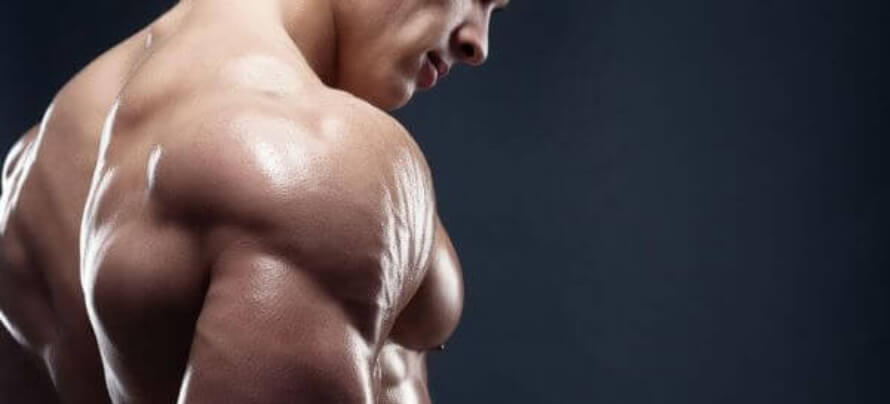
My strategy for building great shoulders is three-pronged:
- Target the front, side, and rear delts separately.
- Do a lot of compound exercises and heavy weightlifting.
- Do one to three shoulder workouts per week.
Let’s look at each part of this plan.
1. Target the Front, Side, and Rear Delts Separately
The front delts are heavily involved in all pressing exercises, and this is particularly true of the bench and incline bench press.
On the one hand, this is helpful because so long as you’re doing some heavy pressing every week, your front delts will receive a fair amount of training.
On the other hand, most upper body exercises don’t train the side and rear delts to nearly the same degree, which can produce an imbalance between the deltoids over time.
This is common among guys in particular, who love to press and whose front delts have significantly outpaced their side and rear delts in overall strength and size.
Many guys supplement their pressing with front raises, which target the anterior deltoids and further exacerbate the problem.
This is why I recommend you give your side and rear delts plenty of attention in your shoulder workouts. It’s okay to include shoulder exercises that emphasize the front delts, but if you’re training your chest, your front delts are already getting plenty of attention.
Here’s how I like to do it:
- Bench and incline press two to three times per week for overall upper body development.
- Exercises that involve both shoulder extension (such as a side lateral raise) and rotation (such as a reverse fly) to train both your side and rear delts.
- Train with heavy weights to increase muscle activation of all three deltoids.
The workout program I share later in this article incorporates each of these tips.
2. Do Compound Exercises and Lift Heavy Weights
One of the most important lessons I’ve learned in the last decade of researching, training, and coaching is this:
As a natural weightlifter, your number one long-term goal should be increasing your whole-body strength.
I know, I’m repeating myself, but it’s just that important. So long as you make that your primary focus in your training, you’ll have no trouble gaining the size and definition you want.
The reason for this is while you can gain a fair amount of muscle in the beginning without gaining much strength, once you graduate to an intermediate lifter (year 2+), strength and size become closely correlated.
In other words, once your “honeymoon phase” is over and your body is no longer hyper-responsive to resistance training, the best way to continue gaining size is to continue gaining strength.
How do you best do that?
While exercise science is complex and there are many more questions than answers, the evidence is clear on this one:
Heavy, compound resistance training is the most effective way to get stronger.
And that’s why us natural weightlifters need to do a lot of heavy compound weightlifting if we want to gain significant amounts of muscle and strength.
This isn’t a special rule just for the shoulders, either. It applies equally to every major muscle group in the body, including the smaller, more stubborn ones like the arms, calves, and chest, as well as the bigger, more responsive ones like the legs and back.
Therefore, if you want to get a big, rounded, or even just “defined” shoulders as quickly as possible, then you want to get strong shoulders as quickly as possible.
And that means doing a lot of heavy shoulder training, and a lot of heavy pressing in particular.
What do I mean by “heavy,” you’re wondering?
I mean working primarily with weights in the range of 70 to 80% of your 1RM, or in the range of 8 to 10 (70%) to 4 to 6 (80%) reps.
Practically speaking, this means taking each set to about one to two reps shy of technical failure (the point at which you can’t complete another rep without a breakdown in form). Another way of looking at this is finishing each set with one to two “reps in reserve,” as researchers call it.
In other words, your “muscle-building sets” should be pretty damn hard.
What do I mean by “compound exercises“?
Well, these are exercises that involve multiple joints and muscles, as opposed to isolation exercises that focus on a single joint and a limited number of muscles.
For example, an isolation exercise like the dumbbell side raise primarily involves the shoulder joint and the traps, whereas a compound exercise like the barbell overhead press involves the shoulder and elbow joints and the pecs, deltoids, triceps, back, and even the legs to a slight degree.
You’ll learn the most effective compound exercises and how much weight to use in the program I share below.
3. Do One to Three Shoulder Workouts Per Week
You may have heard that you need to train each muscle group at least two or three times per week to maximize muscle and strength gain.
There’s nothing wrong with training major muscle groups several times per week, but is it absolutely necessary?
No.
Research shows that workout frequency per se, or how often you train a particular muscle group, actually isn’t all that important when it comes to gaining muscle and strength.
What matters much more is your total weekly training volume, or the total amount of hard sets you do each week.
“Hard sets?” you’re wondering.
Well, a “set” is a fixed number of repetitions of a particular exercise, and a “hard set” is a heavy, muscle- and strength-building set that’s taken close to technical failure (the point where you can no longer continue with proper form).
So, coming back to my point above, as long as you do enough hard sets each week for a given muscle group, it doesn’t matter much how you break them down into individual workouts.
For example, you can expect more or less the same amount of muscle and strength gains from doing 12 hard sets for your shoulders on Monday or doing 4 hard sets for your shoulders on Monday, Wednesday, and Friday.
With that out of the way, let’s get to the obvious question: How many hard sets should you do per week to build great shoulders?
I’ve tried many different workout splits and volume and frequency schemes and what I’ve found works best is in line two extensive reviews on the subject.
When your training emphasizes heavy weights—70 to 80%+ of 1RM—optimal volume seems to be about 9 to 15 hard sets performed every 5 to 7 days.
This applies to the shoulders as well as every other major muscle group.
Before you increase your training volume or your frequency beyond that, make sure you’re pushing for progressive overload in your workouts, getting enough sleep, and eating enough food.
In many cases, people I’ve worked with who thought they were “hardgainers” who needed loads of volume to make gains were really just people who needed to train harder, get more sleep, or eat more food.
That said, now and then, I do hear from people (guys, mostly) who appear to be doing everything right but simply aren’t seeing significant changes in their shoulder size and strength.
And here’s what I like to do with them:
- Train shoulders two or three times per week on nonconsecutive days.
- Temporarily increase the number of weekly hard sets to 18 to 27.
For example, if they’re currently training shoulders on Mondays and Thursdays, I’d have them reshuffle their schedule so they can train shoulders on Mondays, Wednesdays, and Fridays (remember, this is including chest workouts, which also train the shoulders).
This slight increase in weekly volume isn’t a “magic fix” by any means, but can help break through stubborn muscle growth plateaus.
Alright, now that we have basic training theory under our belts, let’s look at the seven best shoulder exercises.
The 7 Best Shoulder Exercises
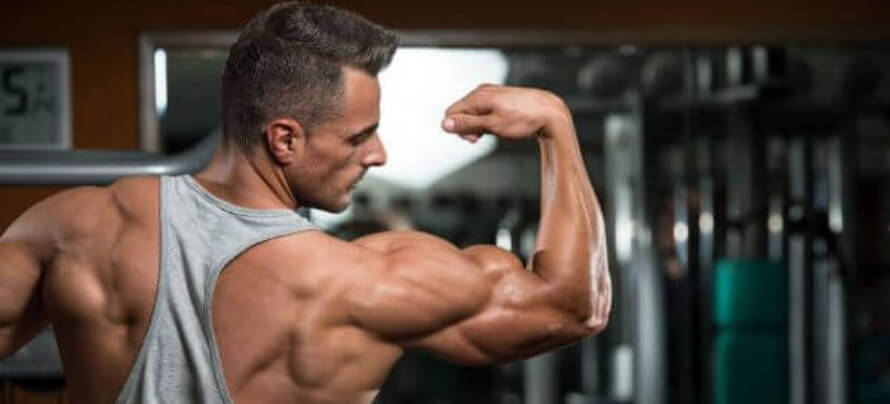
Poke around on the Internet for shoulder workouts and you’ll quickly be overwhelmed.
You’ll find at least a hundred different exercises suggested for a hundred different reasons.
The good news, though, is only a small handful are really necessary.
The following exercises are what I’ve used to dramatically improve my shoulders.
They’ll do the same for you.
The Seated or Standing Military Press
Barbell and dumbbell pressing form the foundation of effective shoulder training.
These movements emphasize the anterior deltoid but heavily involve the other two heads, as well as the rotator cuff muscles.
They’re are also safest for overloading your shoulders with heavy weights.
Some people say that barbell pressing is better than dumbbell, or vice versa, and EMG studies have shown that dumbbell pressing may be slightly superior in terms of muscle activation, but the effects were small and EMG isn’t without its flaws.
Based on my experience, I wouldn’t say either the dumbbell or barbell press is fundamentally “better.”
Both require a large amount of upper body strength and stability, and I’ve found them complementary and have done both for years now.
Specifically, what I’ve done is repeat cycles of 6 to 8 weeks of starting my shoulder workouts with barbell pressing followed by the same period of starting with dumbbell pressing.
Now, there are two types of presses you can do:
- Seated pressing
- Standing pressing (also known as overhead pressing)
Similar to barbell vs. dumbbell pressing, EMG research indicates that standing pressing may be more effective, but, again, I don’t put much stock in this.
What’s most definitely true is standing pressing is significantly harder than seated.
I was comfortably repping 205 pounds on the seated barbell press and when I first switched to the standing press, I struggled with 165 pounds.
In weightlifting, harder generally means better, but standing pressing is more challenging mainly because of the core and lower back strength and stability and technical skill it requires, not because it’s training your shoulder muscles more intensively.
That makes the standing (overhead) press a better whole-body exercise, but not necessarily a better shoulder exercise.
In fact, I’d argue that the seated press may be better for long-term shoulder gains because it allows you to progress into heavier weights faster (because your strength isn’t as limited by your core and back strength or balance and coordination).
In a sense, seated pressing allows you to “target” your shoulders more with the weights you’re handling.
Furthermore, if you’re doing heavy deadlifting and squatting every week (which you should), you probably don’t need the additional core and lower back training that comes with overhead pressing.
The bottom line, though, is you can’t really go wrong with standing or seated so long as you’re doing some form of heavy pressing every week.
If you’re more comfortable with or just like standing barbell pressing more, you can leave seated out of your routine.
If it’s the other way around—if you’re more comfortable with or enjoy seated barbell pressing more—that’s fine, too.
I like to alternate between both standing and seated, similar to how I alternate between barbell and dumbbell presses.
It’s also worth mentioning that I don’t do standing dumbbell presses because they don’t allow for heavy enough weights.
So, here’s how to properly do the seated barbell military press:
And here’s the dumbbell press:
Here’s how to do the standing barbell military press correctly:
View this post on Instagram
And the standing dumbbell press:
The Dumbbell Arnold Press
The dumbbell Arnold press is a variation of the traditional dumbbell military press that increases the range of motion.
Here’s how it looks:
Due to the additional work your shoulders have to do, the Arnold press reduces how much weight you can use, though. This is why I like to do it after a seated or standing barbell press.
In other words, I treat the Arnold press as an “accessory exercise” for my anterior (front) deltoids.
Here’s how to do it:
The Dumbbell Front Raise
The dumbbell front raise is a good exercise for isolating the anterior deltoids.
It can be useful for supplementing your pressing, but it’s not a good replacement for it because it just can’t deliver anywhere near the same results.
As you learned a moment ago, most people are already doing enough for their anterior delts by pressing heavy a few times per week, so there’s often no need for additional front delt training.
That said, if you feel your front delts are lagging, doing a few sets of dumbbell front raises per week can help bring them up to par.
Here’s how to do it:
The Dumbbell Side Lateral Raise
This is an extremely important and often neglected shoulder exercise.
It targets the side deltoids, which accounts for a lot of the shoulder roundness and “pop” that we want, and which need special attention.
(Heavy pressing alone isn’t enough to fully develop the side delts.)
Here’s how to do it:
As your shoulders get stronger, you’ll find it harder to maintain proper form on your side raises.
(Trying to lift two heavy dumbbells simultaneously can be very awkward.)
An effective way around this is a hanging one-arm raise, like this:
The Dumbbell Rear Lateral Raise
The posterior (rear) deltoid is the smallest and weakest of the shoulder muscles, but it contributes significantly to the overall look (especially from the side and back).
The dumbbell rear lateral raise is a great exercise for targeting the rear delts:
You can also do this standing:
The Barbell Rear Delt Row
The barbell rear delt row is another one of my favorite rear delt exercises.
Here’s how to do it:
The Face Pull
The face pull is good for strengthening both the rear delts and rotator cuffs.
Here’s how it works:
The Best Shoulder Workout for Men & Women
The best type of shoulder workout is one that involves several exercises to properly train each of the three deltoids (and, as a byproduct, the rotator cuff muscles as well).
It ideally involves at least one compound movement, like a barbell or dumbbell press, and emphasizes heavy lifting.
The following workout is a great introduction to this style of training and it’s equally applicable to both men and women.
That said, you’ll see that I recommend different rep ranges for men and women.
This is mainly because most women start out much weaker than men and have little or no resistance training experience and thus can’t comfortably work with weights that are closer to their one-rep max.
As they get stronger, though, they can and should start including heavier work in their training. (And no, this won’t make them “bulky!”)
If, however, you’re a woman that’s well-acquainted with heavy weightlifting, then I recommend that you follow the heavier recommendations for men.
So, do the following workout once every 5 to 7 days for the next 8 weeks, and I think you’ll be very happy with the results.
Seated or Standing Barbell Military Press
Warm-up and . . .
Men/Experienced Pressers: 3 sets of 4 to 6 reps at 80 to 85% one-rep max (1RM)
Women/New to Pressing: 3 sets of 8 to 10 reps at 70 to 75% of 1RM
Seated Dumbbell Military Press
3 sets of 4 to 6 / 8 to 10 reps at 70 to 80% 1RM
Dumbbell Side Raise
3 sets of 8 to 10 reps at 70 to 80% 1RM
Dumbbell Rear Delt Raise
3 sets of 8 to 10 reps at 70 to 80% 1RM
That’s it. And trust me—it’s harder than it looks.
And a few odds and ends on how to do this workout:
You shouldn’t go to absolute muscle failure every set.
Muscle failure is the point where you can no longer keep the weight moving and have to end the set.
We should take most of our sets to a point close to failure (one or two reps shy), and we should rarely take sets to the point of absolute failure.
Personally, I never train to failure for more than two to three sets per workout, and never on the squat, deadlift, bench press, or military press, as it can be dangerous.
Instead, I reserve my failure sets for isolation exercises like hamstring curls, leg extensions, calf raises and the like, and it’s usually a natural consequence of pushing for progressive overload as opposed to deliberate programming.
Rest 3 to 4 minutes in between each set.
This will give your muscles enough time to fully recoup their strength so you can give maximum effort each set.
Once you hit the top of your rep range for one set, you move up in weight.
For instance, if you military press 135 pounds for 6 reps on your first set, you add 5 pounds to each side of the bar for your next set.
If, on the next set, you can get at least 4 reps with 145 pounds, that’s the new weight you work with until you can military press it for 6 reps, move up, and so forth.
If you get 3 or fewer reps, though, reduce the weight added by 5 pounds (140 pounds) and see how the next set goes. If you still get 3 reps or fewer, reduce the weight to the original 6-rep load and work with that until you can do two 6-rep sets with it, and then increase the weight on the bar.
What About Supplements?
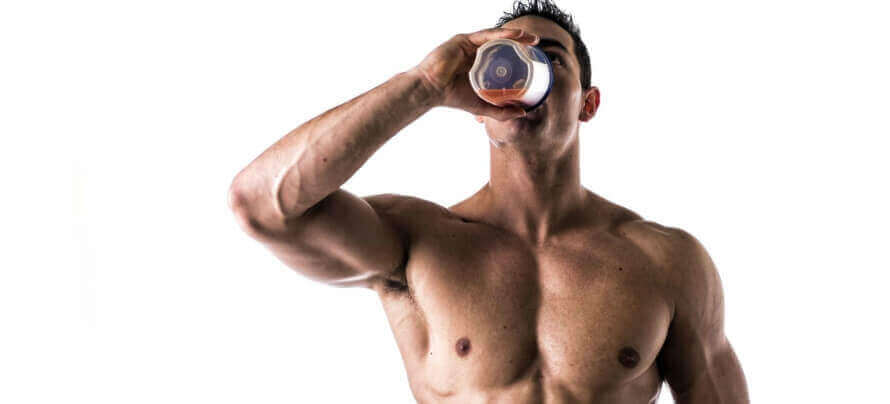
I saved this for last because, quite frankly, it’s far less important than proper diet and training.
You see, supplements don’t build great physiques—dedication to proper training and nutrition does.
Unfortunately, the workout supplement industry is plagued by pseudoscience, ridiculous hype, misleading advertising and endorsements, products full of junk ingredients, underdosing key ingredients, and many other shenanigans.
Most supplement companies produce cheap, junk products and try to dazzle you with ridiculous marketing claims, high-profile (and very expensive) endorsements, pseudo-scientific babble, fancy-sounding proprietary blends, and flashy packaging.
So, while workout supplements don’t play a vital role in building muscle and losing fat, and many are a complete waste of money . . . the right ones can help.
The truth of the matter is there are safe, natural substances that have been scientifically proven to deliver benefits such as increased strength, muscle endurance and growth, fat loss, and more.
As a part of my work, it’s been my job to know what these substances are, and find products with them that I can use myself and recommend to others.
Finding high-quality, effective, and fairly priced products has always been a struggle, though.
That’s why I took matters into my own hands and decided to create my own supplements. And not just another line of “me too” supplements—the exact formulations I myself have always wanted and wished others would create.
I won’t go into a whole spiel here though. If you want to learn more about my supplement line, check this out.
For the purpose of this article, let’s just quickly review the supplements that are going to help you get the most out of your shoulder (and other) workouts.
Creatine
Creatine is a substance found naturally in the body and in foods like red meat. It’s perhaps the most researched molecule in the world of sport supplements—the subject of hundreds of studies—and the consensus is very clear:
Supplementation with creatine helps . . .
You may have heard that creatine is bad for your kidneys, but these claims have been categorically and repeatedly disproven. In healthy subjects, creatine has been shown to have no harmful side effects, in both short- or long-term usage. People with kidney disease are not advised to supplement with creatine, however.
If you have healthy kidneys, I highly recommend that you supplement with creatine. It’s safe, cheap, and effective.
In terms of specific products, I use my own, of course, which is called Recharge.
Recharge is 100% naturally sweetened and flavored and each serving contains:
- 5 grams of creatine monohydrate
- 2100 milligrams of L-carnitine L-tartrate
- 10.8 milligrams of corosolic acid
This gives you the proven strength, size, and recovery benefits of creatine monohydrate plus the muscle repair and insulin sensitivity benefits of L-carnitine L-tartrate and corosolic acid.
So if you want to gain muscle and strength faster and recover better from your workouts, you want to try Recharge today.
Protein Powder
You don’t need protein supplements to gain muscle, but, considering how much protein you need to eat every day to maximize muscle growth, getting all your protein from whole food can be impractical.
That’s the main reason I created (and use) a whey protein supplement. (There’s also evidence that whey protein is particularly good for your post-workout nutrition.)
Whey+ is 100% naturally sweetened and flavored whey isolate that is made from milk sourced from small dairy farms in Ireland, which are known for their exceptionally high-quality dairy.
I can confidently say that this is the creamiest, tastiest, healthiest all-natural whey protein powder you can find.
So if you want to try a 100% naturally sweetened and flavored whey isolate protein powder made from exceptionally high-quality milk that tastes and mixes great, you want to try Whey+ today.
Pre-Workout Drink
There’s no question that a pre-workout supplement can get you fired up to get to work in the gym. There are downsides and potential risks, however.
Many pre-workout drinks are stuffed full of ineffective ingredients and/or minuscule dosages of otherwise good ingredients, making them little more than a few cheap stimulants with some “pixie dust” sprinkled in to make for a pretty label and convincing ad copy.
Many others don’t even have stimulants going for them and are just complete duds.
Others still are downright dangerous, like USPLabs’ popular pre-workout “Jack3d,” which contained a powerful (and now banned) stimulant known as DMAA.
Even worse was the popular pre-workout supplement “Craze,” which contained a chemical similar to methamphetamine.
The reality is it’s very hard to find a pre-workout supplement that’s light on stimulants but heavy on natural, safe, performance-enhancing ingredients like beta-alanine, betaine, and citrulline.
And that’s why I made my own pre-workout supplement. It’s called Pulse and it contains six of the most effective performance-enhancing ingredients available:
- Caffeine. Caffeine is good for more than the energy boost. It also increases muscle endurance and strength.
- Beta-Alanine. Beta-alanine is a naturally occurring amino acid that reduces exercise-induced fatigue, improves anaerobic exercise capacity, and can accelerate muscle growth.
- Citrulline Malate. Citrulline is an amino acid that improves muscle endurance, relieves muscle soreness, and improves aerobic performance.
- Betaine. Betaine is a compound found in plants like beets that improves muscle endurance, increases strength, and increases human growth hormone and insulin-like growth factor 1 production in response to acute exercise.
- Ornithine. Ornithine is an amino acid found in high amounts in dairy and meat that reduces fatigue in prolonged exercise and promotes lipid oxidation (the burning of fat for energy as opposed to carbohydrate or glycogen).
- Theanine. Theanine is an amino acid found primarily in tea that reduces the effects of mental and physical stress, increases the production of nitric oxide, which improves blood flow, and improves alertness, focus, attention, memory, mental task performance, and mood.
And what you won’t find in Pulse is equally special:
- No artificial sweeteners or flavors.
- No artificial food dyes.
- No unnecessary fillers, carbohydrate powders, or junk ingredients.
The bottom line is if you want to know what a pre-workout is supposed to feel like and want to experience the type of energy rush and performance boost that only clinically effective dosages of scientifically validated ingredients can deliver, you want to try Pulse.
The Bottom Line on the Best Shoulder Workout

The reality is anyone that says building impressive shoulders is easy is lying.
The shoulders are small, stubborn muscles that take months to grow and years to reach their full potential for size and strength.
It takes a lot of work and patience, to get there, but can be done.
The three primary muscles that comprise the shoulders are known as the deltoids, and they are:
- The anterior (front) deltoid.
- The lateral (side) deltoid.
- The posterior (rear) deltoid.
The three primary mistakes you can make in your shoulder workouts that will hobble your progress are:
- Doing the wrong shoulder exercises.
- Neglecting progressive overload.
- Doing a lot of high-rep training.
The strategy for building great shoulders involves three steps which are more or less the mirror opposite of the previous three mistakes:
- Target both the front, side, and rear delts.
- Do compound exercises and lift heavy weights.
- Do one to three shoulder workouts per week.
The seven best shoulder exercises are . . .
- The Seated or Standing Military Press
- The Dumbbell Arnold Press
- The Dumbbell Front Raise
- The Dumbbell Side Lateral Raise
- The Dumbbell Rear Lateral Raise
- The Barbell Rear Delt Row
- The Face Pull
And remember, the key is not just doing these exercises but progressing on them, so make sure you track your workouts (I suggest a spreadsheet or my app, Stacked) and try to add weight, reps, or both as often as possible.
You don’t need supplements to build great shoulders, but taking creatine, protein powder, and my pre-workout supplement, Pulse, can help you get more out of your diet and workouts.
Another key factor in progressing on these exercises is organizing them into effective workouts and workout routines, like those shared in this article.
Oh, and if you know someone with itty-bitty little shoulders who could benefit from reading this article, would you mind sending it his or her way?
What’s your take on shoulder workouts? Have anything else to share? Let me know in the comments below!
Scientific References +
- Saeterbakken, A. H., & Fimland, M. S. (2013). Effects of body position and loading modality on muscle activity and strength in shoulder presses. Journal of Strength and Conditioning Research, 27(7), 1824–1831. https://doi.org/10.1519/JSC.0b013e318276b873
- Wernbom, M., Augustsson, J., & Thomeé, R. (2007). The influence of frequency, intensity, volume and mode of strength training on whole muscle cross-sectional area in humans. In Sports Medicine (Vol. 37, Issue 3, pp. 225–264). Sports Med. https://doi.org/10.2165/00007256-200737030-00004
- Schoenfeld, B. J., Grgic, J., & Krieger, J. (2019). How many times per week should a muscle be trained to maximize muscle hypertrophy? A systematic review and meta-analysis of studies examining the effects of resistance training frequency. Journal of Sports Sciences, 37(11), 1286–1295. https://doi.org/10.1080/02640414.2018.1555906
- Grgic, J., Schoenfeld, B. J., Davies, T. B., Lazinica, B., Krieger, J. W., & Pedisic, Z. (2018). Effect of Resistance Training Frequency on Gains in Muscular Strength: A Systematic Review and Meta-Analysis. In Sports Medicine (Vol. 48, Issue 5, pp. 1207–1220). Springer International Publishing. https://doi.org/10.1007/s40279-018-0872-x
- Schoenfeld, B. J., Grgic, J., Ogborn, D., & Krieger, J. W. (2017). Strength and hypertrophy adaptations between low- vs. High-load resistance training: A systematic review and meta-analysis. In Journal of Strength and Conditioning Research (Vol. 31, Issue 12, pp. 3508–3523). NSCA National Strength and Conditioning Association. https://doi.org/10.1519/JSC.0000000000002200
- Lauver, J. D., Cayot, T. E., & Scheuermann, B. W. (2016). Influence of bench angle on upper extremity muscular activation during bench press exercise. European Journal of Sport Science, 16(3), 309–316. https://doi.org/10.1080/17461391.2015.1022605
- Trebs, A. A., Brandenburg, J. P., & Pitney, W. A. (2010). An electromyography analysis of 3 muscles surrounding the shoulder joint during the performance of a chest press exercise at several angles. Journal of Strength and Conditioning Research, 24(7), 1925–1930. https://doi.org/10.1519/JSC.0b013e3181ddfae7
- Kadi, F., Bonnerud, P., Eriksson, A., & Thornell, L. E. (2000). The expression of androgen receptors in human neck and limb muscles: Effects of training and self-administration of androgenic-anabolic steroids. Histochemistry and Cell Biology, 113(1), 25–29. https://doi.org/10.1007/s004180050003
- Bhasin, S., Storer, T. W., Berman, N., Callegari, C., Clevenger, B., Phillips, J., Bunnell, T. J., Tricker, R., Shirazi, A., & Casaburi, R. (1996). The effects of supraphysiologic doses of testosterone on muscle size and strength in normal men. New England Journal of Medicine, 335(1), 1–7. https://doi.org/10.1056/NEJM199607043350101
- Schoenfeld, B. J. (2010). The mechanisms of muscle hypertrophy and their application to resistance training. In Journal of Strength and Conditioning Research (Vol. 24, Issue 10, pp. 2857–2872). J Strength Cond Res. https://doi.org/10.1519/JSC.0b013e3181e840f3
